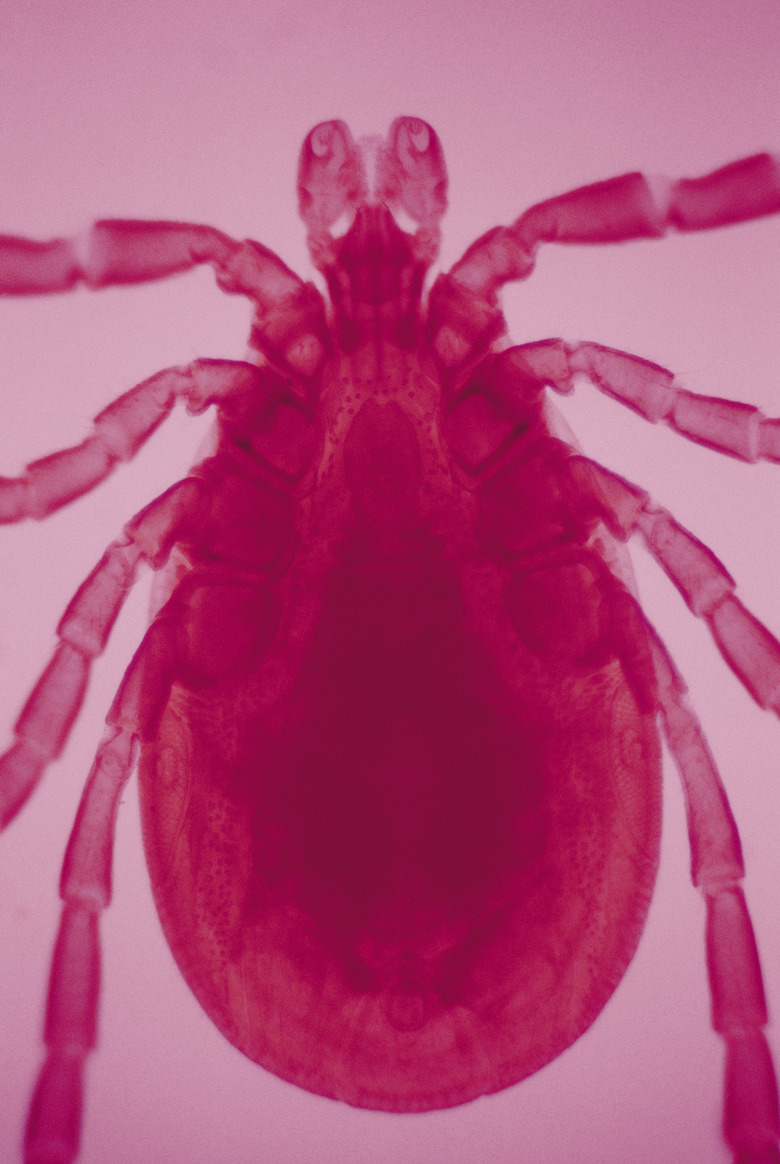What Kind Of A Climate Do Ticks Survive In?
Ticks require three essential elements in any given environment to survive: warm temperatures, high humidity and a plethora of potential hosts. In light of climate change, rising global temperatures and increased rain fall is contributing to the acceleration of a tick's life cycle, which is causing a large flux in tick population, according to the National Reference Laboratory for Tick-borne Diseases.
Tick Life Cycle
Tick Life Cycle
A tick depends on finding a host from which to draw blood in order to grow into maturity and reproduce. When a tick hatches from its egg it immediately begins its quest for a host. They use a highly complex sensory organ, called the Haller's organ, found on the first two front feet to survey their environment for a host. With the help of this organ ticks are capable of detecting a host's presence by sensing their shadow, vibrations, heat and body odor. Once a host is found a tick attaches itself, draws blood and molts two times. The tick will feed between two to 10 days on any given host and grow five to 10 times its original size. When it falls of the host it's full of blood and able to lay its own eggs.
Ideal Climate
Ideal Climate
Ticks aren't capable of drinking water so they require a climate with high humidity to stay hydrated. A climate with a humidity of 85 percent or higher is ideal. At these humidity levels a tick can comfortably absorb moisture from the air to stay hydrated. A tick cannot survive in humidity below 80 percent and will soon die of dehydration if the humidity doesn't rise. Furthermore, ticks require a warm temperature in order to quest. Temperatures below 44 degrees Fahrenheit make it difficult for the tick to move around and find a host. Warm temperatures help a tick get around more easily, which increases its odds for finding a suitable host.
Ideal Habitat
Ideal Habitat
Ticks survive best in humid environments covered in low-lying vegetation. Vegetation provides sufficient coverage from the sun, which helps ticks retain moisture better. In habitats with sufficient shelter ticks are able to quest for a host for months on end, greatly increasing the odds of success. Exposed habitats greatly reduce the amount of time a tick can quest. Prolonged exposure to the sun will dehydrate a tick. More importantly, the ideal environment is abundant in potential hosts — anything from mice, deer, sheep, dogs, birds or people.
Influence of Climate Change
Influence of Climate Change
A 2008 study entitled "What Makes Ticks Tick? Climate Change, Ticks, and Tick-Borne Diseases," prepared for the National Reference Laboratory for Tick-borne Diseases, examined the effects of climate change on tick populations worldwide. Scientists discovered that climate change is greatly influencing the spread and population growth of ticks all over the world. Warmer temperatures, higher global rain fall and increased humidity creates ideal environments for ticks, which makes it easy from them to explore new territory. Most shocking is the study's revelation that from 1973 to 2003 incidents of tick borne disease, such as tick-borne encephalitis (TBE), Lyme Borreliosis (LB), and other tick- borne diseases (TBDs), has increased by a whopping 400 percent. Furthermore the study proclaims that from 2005 to 2006 TBDs increased another 30 percent.
Cite This Article
MLA
Malysa, Sebastian. "What Kind Of A Climate Do Ticks Survive In?" sciencing.com, https://www.sciencing.com/kind-climate-do-ticks-survive-8734880/. 24 April 2017.
APA
Malysa, Sebastian. (2017, April 24). What Kind Of A Climate Do Ticks Survive In?. sciencing.com. Retrieved from https://www.sciencing.com/kind-climate-do-ticks-survive-8734880/
Chicago
Malysa, Sebastian. What Kind Of A Climate Do Ticks Survive In? last modified March 24, 2022. https://www.sciencing.com/kind-climate-do-ticks-survive-8734880/
